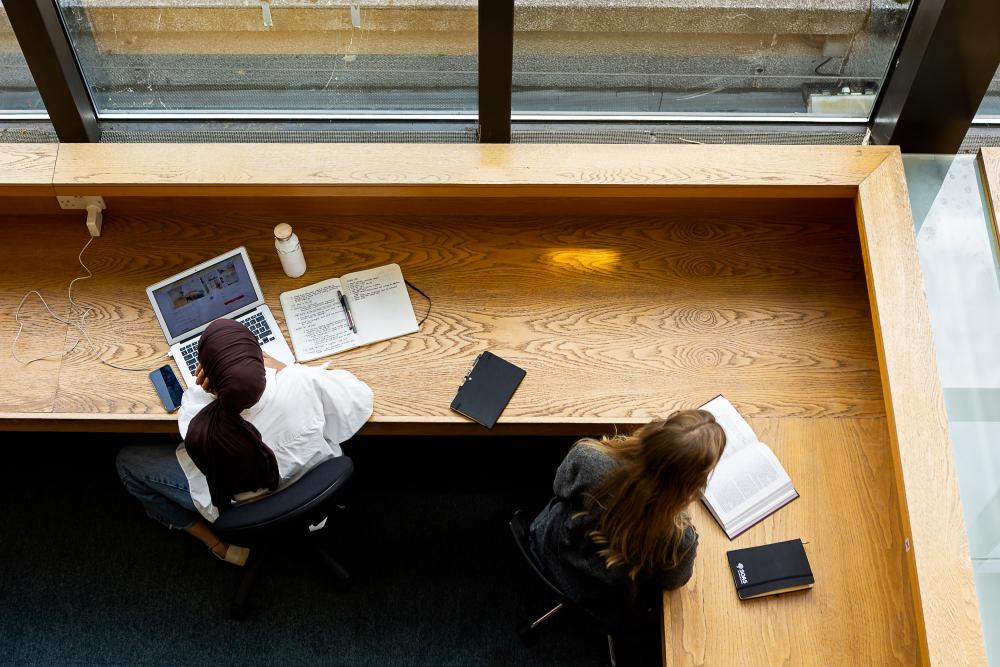Exploring racial inequality in higher education: My SOAS Equity Co-Creator Fellowship project


BA student Naisha Deora shares her experience examining racial inequity in UK higher education as part of the SOAS Equity Co-Creator Fellowship, highlighting the link between race-based exclusion and academic and admissions outcomes.
We have entered an era where higher education is virtually non-negotiable to land a future job. We have also entered an era where diverse campuses are the norm.
University admissions teams across the UK have committed to positive action, in the form of targeted measures to enable people from under-represented groups to overcome barriers to university acceptance. However, merely introducing racialised students on university campuses does not create an inclusive environment.
Merely introducing racialised students on university campuses does not create an inclusive environment.
The majority of UK universities, particularly those considered ‘prestigious’, were founded on the basis of white supremacy. Therefore, exclusion is a systemic issue that must be combatted by altering structures rather than simply introducing racialised groups into ‘white’ spaces.
The aim of my project
My project explored the link between the social inclusion of a racialised student at a UK higher education institution and their academic wellbeing. I also explored the role that race plays in the university admissions process.
This idea was based on my personal higher education experiences in both the US and the UK. When studying in the UK, I noticed several differences in the diversity landscape when compared with the US. While, from my personal experience, the student body was far more diverse in the UK, the level of social inclusion and integration was far higher in the US.
The process
I began by conducting overarching secondary research, focusing on literary analysis. I also looked through various surveys and analysed data on admissions rates for universities at various ranks.
With the help of my advisor, Amrita DasGupta, I began narrowing down the scope of my research based on my findings. From the very start, I had decided that presenting the research in an accessible, understandable format would increase the reach of my project.
With the guidance and encouragement of my advisor, I decided to develop a three-series podcast. In the first episode, I delivered an overview of my research. I then interviewed racialised students who attend UK universities in the next two episodes, using questions informed by my earlier research.
My findings
My primary and secondary research presented similar findings. My initial research outlined the large racial bias in admissions processes at UK universities, especially at those considered ‘elite’. A literary analysis of critical race theory in education also revealed the importance of counter-storytelling methods.
Based on my initial findings, I suggested that a potential solution could be the creation of a ‘safe space’ or dedicated area for specific racialised groups.
The interviews I conducted presented personal accounts that corroborated the statistics I’d previously uncovered during my secondary research. In these interviews, both of my participants expressed their initial struggle to fit in and find a community at university. Based on my initial findings, I suggested that a potential solution could be the creation of a ‘safe space’ or dedicated area for specific racialised groups.
Both the interviewees agreed with the need for such a space, and provided curated insight into what this could look like.
What I learnt from this experience
Completing an Equity Co-Creator Fellowship has been truly eye-opening, not only in the scope of race and gender studies but also in terms of my research and presentation abilities, which I’ve been able to develop while building meaningful relationships.
Going into this process, I was hesitant about my ability to develop a creative presentation that strayed away from the usual research papers I was comfortable writing. Instead, this project has helped me develop valuable skills that will be transferrable to my degree.
Header image: Caleb Woods via Unsplash.
About the author
Naisha Deora is a second-year BA International Relations and Global Development student. Her research explores the current experience of students of colour in Higher Education Institutions (HEI), investigating what could be improved and how to implement these changes.

